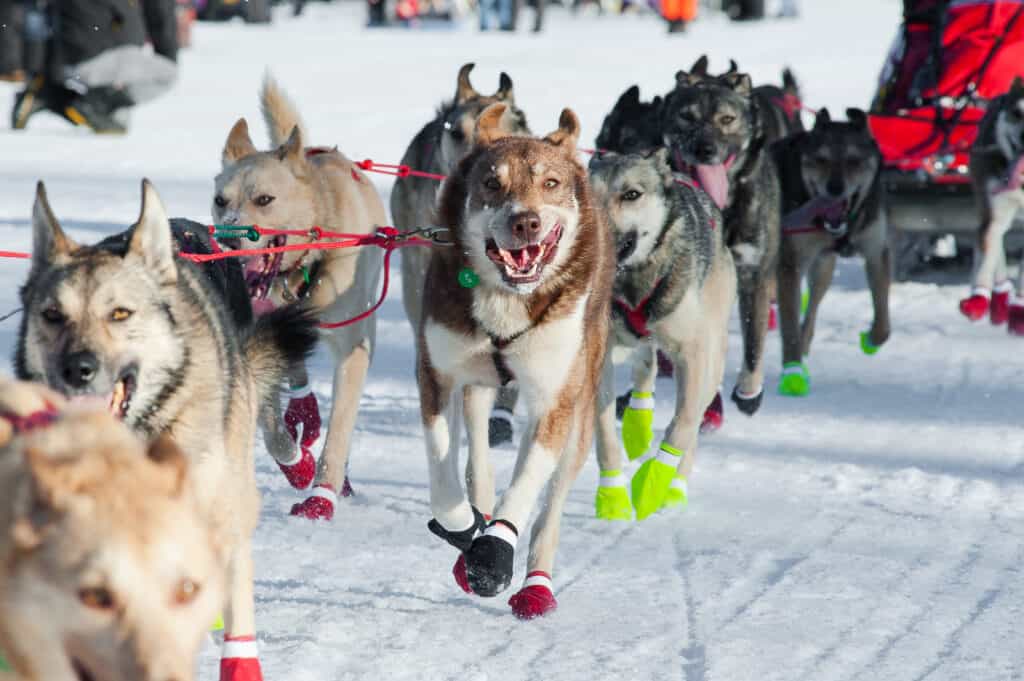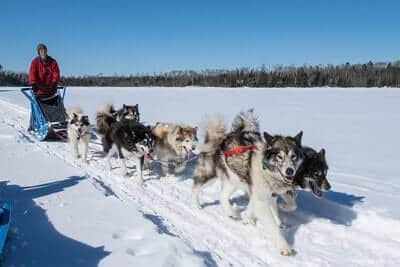Do Sled Dogs Get Cold Paws?
The short answer is no. Sled dogs stay true to themselves while living in their native habitat. When they run, their feet retain heat, and there is no problem with their blood circulation. However, when sled dogs wake up from a nap and their blood is not flowing through their feet as quickly as it should, they may be more inclined to lift a foot off the snow to stimulate blood flow.
They have a complex system of heat transfer from warm arterial blood to cold venous blood, thanks to the proximity of their veins and arteries. Warm blood in the arteries transfers heat to the surrounding, cooler veins.
Before reaching the body center, cool blood from the feet is warmed to a lukewarm temperature. As a result, the dog’s body temperature is prevented from dropping while the temperature of the paws remains constant.
Also, the fat and connective tissue in their paw pads is a type that can withstand freezing temperatures. They can even curl up on the snow with their paws raised and their nose tucked under their tail to trap more heat.
You are probably thinking, okay, but what about the booties? The booties rarely provide warmth to the paws. Instead, their primary purpose is to shield the feet from abrasion and other minor ailments that hundreds of miles of running could cause. In addition, snow becomes abrasive, like sandpaper in cold extremes, increasing the need for boots.
It’s ironic that overheating, rather than cold, calls for concern among sled dogs. When sled dogs have ice on their coats, it is a shocking indication they are not keeping warm because it signals they are losing enough body heat to melt the snow covering them. The sight of snow-covered, sleeping sled dogs demonstrates how well they conserve heat.

Positions Of Sled Dogs In Front Of The Sled
If you’ve been lucky to see live sled pulling, or have seen photos/videos of sled dogs pulling a musher through the frozen land. In that case, you may have noticed that each sled dog pair has a different role in the difficult and sometimes challenging territories they are facing.

The dogs are positioned in pairs on either side of a gangline that attaches to their harnesses and the sled. The maximum number would be 16 dogs, and the minimum is 12 dogs on the gangline.
This is a description of each position pair:
Mushers don’t usually switch their dogs’ positions. Some dogs are better leaders in certain weather conditions than others are. However, sometimes a musher would like to give a leader dog a break after the long run. Additionally, the musher would split up dogs who fight together.
Why do Huskies feet not freeze?
First, their veins and arteries run very close to one another, creating an intricate heat transfer system from warm arterial blood to cold venous blood. Second, they have a type of freeze-resistant connective tissue and fat in their paw pads.